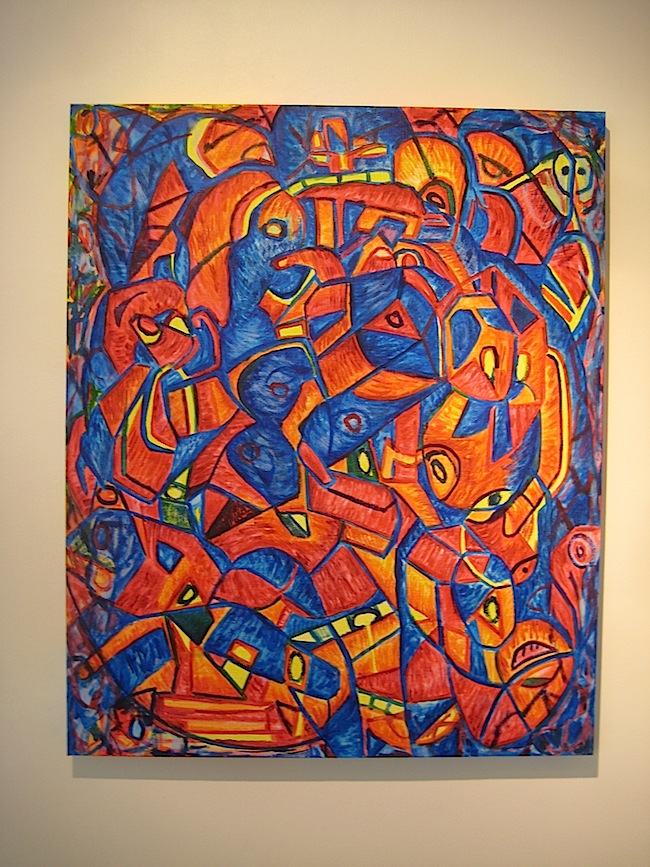
An Overgrown Jungle in Tallinn
09/07/2012
“An Unknown Entity of Desire” by Carmen Lansberg is on view in Hobusepea Galerii, Tallinn, through July 16th, 2012
Last summer, shortly after The New York Times critic Ken Johnson released his book “Are You Experienced? How Psychedelic Consciousness Transformed Modern Art”, he stated in an interview that “A lot of people, including many artists, sense that the psychedelic door has not been closed”. While entering the small contemporary art gallery Hobusepea in Tallinn’s Old Town and seeing the paintings of the Estonian artist Carmen Lansberg (1981), the first thought that comes to Your mind is, that seeking the psychedelic is an over-worn form of expression, first appearing in 1960’s America and continuing up to the 1990’s, when it strongly inspired graffiti culture and was reborn in the era of raves – but looking at it from a world-wide context, you will come to the conclusion that psychedelia really hasn’t come to an end after all. Take, for instance, the 2008 work of art “Pour Your Body Out (7354 Cubic Meters)”, at New York’s museum of contemporary art, MoMA, in which the Swiss artist Pipilotti Rist had constructed a huge, multi-channel video-installation that literally swallowed the sprawling stream of consciousness of the viewer.

Carmen Lansberg also wishes to take the viewer on a trip into the “labyrinths of the cerebral hemispheres”, as it states in the press release for the exhibition. In describing the atmosphere, one would have to say that even though the spectrum of colors leads to associations with joy and happiness, you’re actually left with the exact opposite impression – that of menace – similar to the phenomenon found in the nature, in which the most poisonous plants are also the most colorful ones. Maybe this is in referral to the intensity of modern daily life, our unhealthy way of living, and our distrust of beautiful, glossy and over-blown cultural and consumer products that tend to surprise us with their “rotten cores”. “I think colors are my words, and I make sentences when I paint and tell a story with a painting. I like pure, clean and clear colors and I try to be delicate when working with them. For this exhibition I wanted the color to enhance the foreignness, to indicate that it’s a bizarre, fictive, another world, time and space, that I’m showing,” Carmen tells me.
But in evaluating the painterly quality of her works, one notices the pleasant coverage, reminiscent of coloring with magic markers. It brings to mind associations with the freedom and carefreeness of childhood, as experienced next to the world of adults; as well as the cradle of psychedelic art – the culture of “Flower Children”. However, the paintings don’t “pull you in”, as could have been hoped for after the promise of a trip into the jungles of the consciousness. In places, the shapes are reminiscent of swollen tree roots, but they are meshed so closely together that the viewer’s trip doesn’t go any further than the walls of the quiet, white room of the gallery. But maybe You just need to be more patient and devoting, as Carmen Lansberg herself was during the inspiration process for this solo show. In an e-mail conversation Carmen reveals that she was mainly inspired by the collection of mineral stones in Natural History Museum in London. “I was mesmerized by the pure beauty and simple, yet somehow mystical idea and natural wonder of the stones. I spent quite a while looking and studying the colors, shapes, structures and I saw that each stone was a space, a world of its own.”